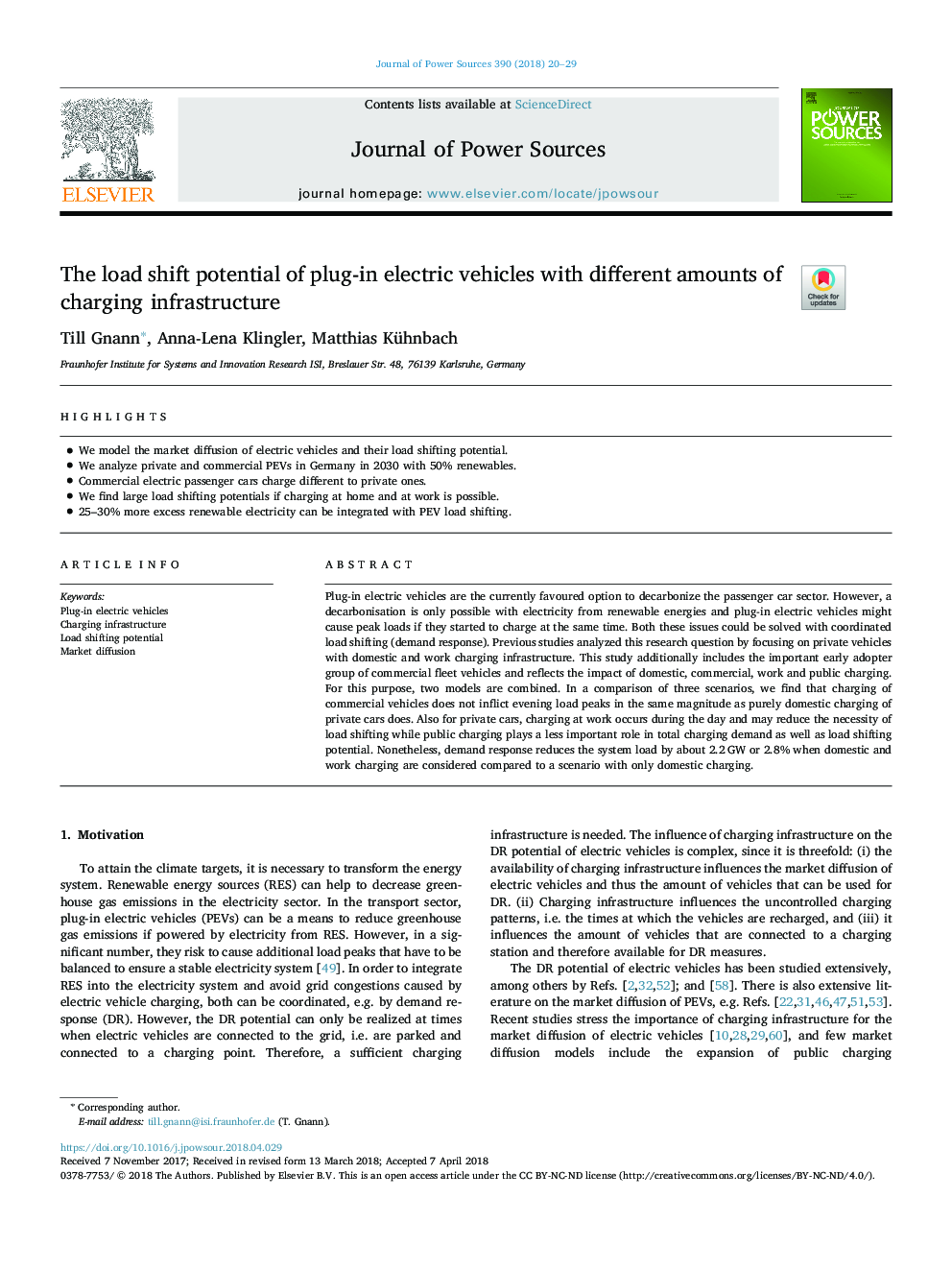| Article ID | Journal | Published Year | Pages | File Type |
|---|---|---|---|---|
| 7725221 | Journal of Power Sources | 2018 | 10 Pages |
Abstract
Plug-in electric vehicles are the currently favoured option to decarbonize the passenger car sector. However, a decarbonisation is only possible with electricity from renewable energies and plug-in electric vehicles might cause peak loads if they started to charge at the same time. Both these issues could be solved with coordinated load shifting (demand response). Previous studies analyzed this research question by focusing on private vehicles with domestic and work charging infrastructure. This study additionally includes the important early adopter group of commercial fleet vehicles and reflects the impact of domestic, commercial, work and public charging. For this purpose, two models are combined. In a comparison of three scenarios, we find that charging of commercial vehicles does not inflict evening load peaks in the same magnitude as purely domestic charging of private cars does. Also for private cars, charging at work occurs during the day and may reduce the necessity of load shifting while public charging plays a less important role in total charging demand as well as load shifting potential. Nonetheless, demand response reduces the system load by about 2.2â¯GW or 2.8% when domestic and work charging are considered compared to a scenario with only domestic charging.
Related Topics
Physical Sciences and Engineering
Chemistry
Electrochemistry
Authors
Till Gnann, Anna-Lena Klingler, Matthias Kühnbach,
